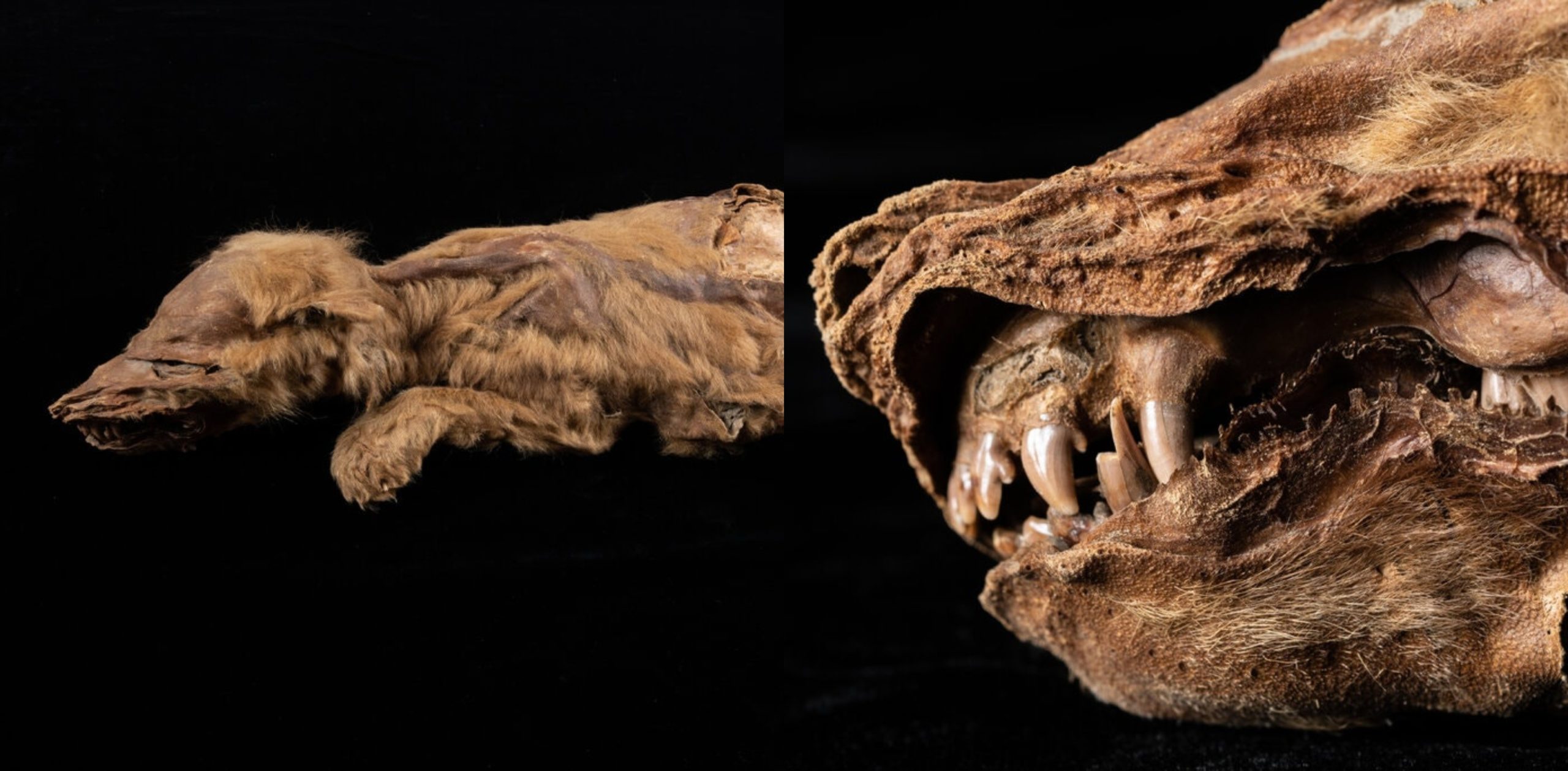A den in the sandy soil fell on a wolf pup more than 50,000 years ago and killed her, locking her free from air and moisture that the pup’s body mummified in the cold.
Until four years ago, when the work of global warming and the discovery of a gold miner unearthed her in Canada’s Yukon Territory near Dawson City, she remained buried in permafrost.
He needed a precious metal but paleontological gold was what he got.
At the Yukon Beringia Interpretive Center in Whitehorse, this mummy is now on display: body and hair intact, lips shrunk back so that her teeth are visible in what looks a little like a snarl. The puppy is so well-preserved that it is possible to say she is female by visual inspection.
In the language of the Tr’ondëk Hwëch’in people, in whose ancestral land the wolf was buried, she also has a name, Zhur (meaning wolf).
Among fossil species, Zhur is “basically the best preserved wolf ever found,” said Julie Meachen, a paleontologist and anatomy professor at the University of Des Moines in Iowa, who led a team of experts to research everything that could be known about the ancient wolf pup using non-invasive methods, including DNA, biochemistry and bone structure.
She and her colleagues published the results Monday in Current Biology.
Angela Perri, an archaeologist at the University of Durham in England who did not participate in the research but worked on other projects with Dr. Meachen, said the study of the pup was an illustration of how scientists have been able to reach back into deep time in recent years and paint a vibrant and accurate image of an individual species.
The researchers, she said, were able to ask not just, “What were Arctic wolves like?” but “What was the life of this wolf?”
The finding, and the safety of the dog, was the first stroke of luck, said Dr. Meachen. The permafrost in the Yukon is disappearing, as it is around the world, due to climate change. Warming has uncovered troves of precious fossils in Siberia as well.
Grant Zazula, a paleontologist with the Yukon territorial government, who contacted Dr. Meachen, was informed by the miner who discovered the mummified pup, Neil Loveless. To research Zhur, she and Dr. Zazula formed an interdisciplinary team of Canadian and U.S. scientists.
DNA analyses of the geological period of the fossil and chemical studies of the oxygen levels in the specimen, using a number of techniques, such as carbon dating, zeroed in on the time Zhur lived, some 56,000 to 57,000 years ago. In an ice age called an inter-stage, it was a mild time when temperatures were warm enough for rivers and streams to flood in the region.
They learned she was about 6 and 7 weeks old at the time of her death after looking at X-rays of the bones and the growth of teeth in Zhur. She was healthy and well-nourished, and the soil under which the den dug was sandy, and therefore fragile, so the researchers concluded that when the den collapsed, she most likely died.
The fate of her probable littermates, mother and the rest of the pack is a mystery.
Studying her DNA revealed that she was a Pleistocene arctic wolf, the same genus as gray wolves today, but not a direct ancestor. And as humans arrived in numerous waves from Eurasia, so did the wolves.
Her habitat was that of the great herbivores and other carnivores, all of which had died, including snow-toothed tigers, cave bears, and American lions. Large animals such as caribou were exploited by the wolves of this period, but a glance at the chemicals preserved in Zhur’s bones revealed that her diet was heavy on sea creatures, most likely salmon.
There are wolves today that live on salmon at certain times of the year, when the fish are swimming rivers and streams to spawn.
You can fly to Whitehorse to see Zhur in person until the coronavirus pandemic is over, but for an early preview, the interpretive center will have a live Facebook event on Monday, Dec. 21, at 3 p.m. Eastern, with a team of researchers from their areas who examined the fossil.
Source: Independent




Leave a Comment